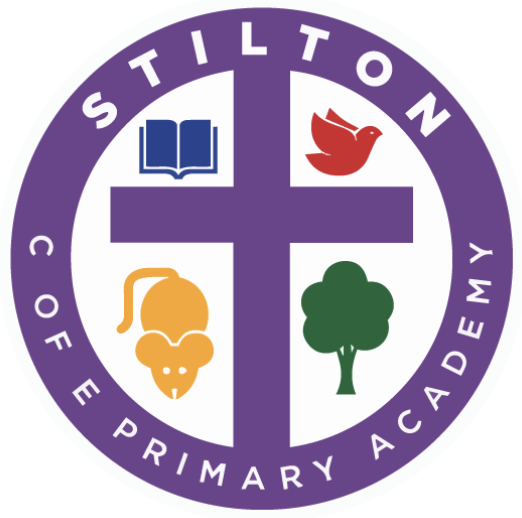
English
At Stilton C of of E Primary Academy, we believe all our children (from EYFS to Y6) are entitled to an ambitious, knowledge-rich English curriculum that ensures they will become fluent readers and writers who are able to confidently access the demands of the secondary school curriculum.
For more information on Phonics and Reading, click on the links below to be re-directed to the relevant pages of our website:
Our Writing Curriculum
At Stilton C of E Primary Academy, we aim to:
- Create an engaging curriculum, which inspires a love for writing based on audience and purpose.
- Provide children with the essential tools in spelling, grammar, punctuation and exposure to new vocabulary to support their own independent writing.
- Challenge and encourage children to use their curiosity and imagination to create their own writing.
- Support children to become independent writers with an understanding of the writing process such as planning, editing and redrafting.
- Promote a love of reading high quality texts, with a view of broadening children’s reading experiences of themes, genres and text types, (in support of writing).
- Daily SPAG sessions with 3-4 questions aimed at supporting recall of SPAG facts learnt in each year group.
- Use of the ‘Debbie Hepplewhite approach’ to handwriting. This begins in EYFS for non-cursive and moves to cursive handwriting in Year 2. From KS2, children are able to work towards achieving their pen license.
- Continuity across the school with the use of the Sounds Write spelling programme in KS2, to keep the learning of spelling consistent throughout both Key Stages.
Pupils at Stilton C of E Academy will leave Year 6:
- Children will be able to independently demonstrate their knowledge of spelling, grammar and punctuation through independent writing tasks.
- Write effectively for a range of purposes and audiences, selecting language that shows good awareness of the reader (e.g. the use of the first person in a diary; direct address in instructions and persuasive writing)
- In narratives, describe settings, characters and atmosphere
- Integrate dialogue in narratives to convey character and advance the action
- Select vocabulary and grammatical structures that reflect what the writing requires, doing this mostly appropriately (e.g. using contracted forms in dialogues in narrative; using passive verbs to affect how information is presented; using modal verbs to suggest degrees of possibility)
- Use a range of devices to build cohesion (e.g. conjunctions, adverbials of time and place, pronouns, synonyms) within and across paragraphs
- Use verb tenses consistently and correctly throughout their writing
- Use the range of punctuation taught at key stage 2 mostly correctly (e.g. inverted commas and other punctuation to indicate direct speech)
- Spell correctly most words from the year 5 / year 6 spelling list, and use a dictionary to check the spelling of uncommon or more ambitious vocabulary
- Maintain legibility in joined handwriting when writing at speed
